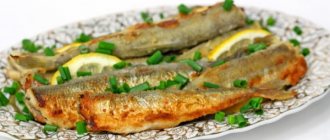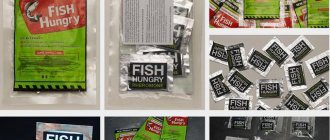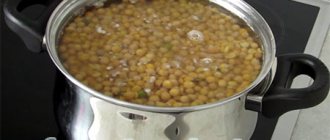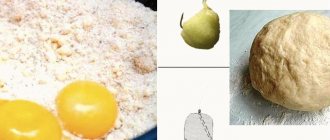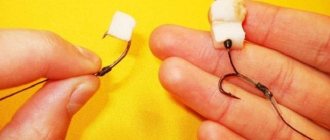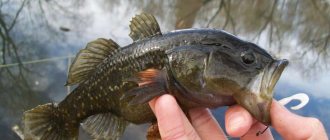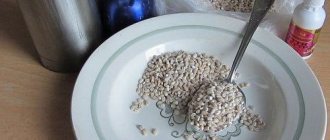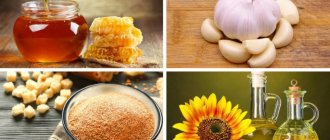It is rare that fishing takes place without the use of pearl barley. Fishermen use cereals as bait, as well as in the form of bait. Fishing with pearl barley is a budget option.
The result of fishing depends on the correct choice and method of cooking pearl barley. Therefore, preparing bait requires a certain skill.
How to choose grains for fishing?
The choice of cereals should be approached thoroughly; it is recommended to consider the following points:
- The more grain, the better. They must be peeled and have a white tint.
- For good bait you need fresh grits. Therefore, you need to pay attention to the packaging date.
- Do not use pearl barley grains if they have been accessible to rodents or if there are moths in them.
Note! The result of fishing depends on the bait, so it is worth spending a little time to choose a quality product.
Choosing cereals
Be aware that not every grain is suitable for making this attachment. Before using it for its intended purpose, you need to purchase grains that will meet certain criteria. So let's get started:
- Choose large grains. They must be clean and white.
- The dark color of the grain indicates that it is from last year's harvest, so preparing such bait will take you much longer.
- Make sure there are no insects or rodents in the pearl barley.
Methods for preparing pearl barley
Every angler can prepare porridge for fishing on his own. It is easy to cook on the stove or steam in a thermos. The two methods differ in the amount of time spent cooking.
For bait, porridge boiled on the stove is more suitable. If you plan to use cereal as a bait, then it is better to steam the grains.
How to cook correctly?
Fish do not always like flavorings; in such cases, the porridge for fishing is prepared without additives.
The process is as follows:
- Pour the washed grains with water 1:6 and place on the stove.
- When the porridge boils, cook it for about 60 minutes, stirring occasionally.
- You need to drain the remaining water from the finished cereal.
When preparing, it is important to consider the following points:
- Depending on the type of grain, the cooking time is determined. 30 minutes after boiling, you need to make sure that the cereal is not overcooked.
- The porridge will not stick together if you add more water during cooking.
- If the grains for fishing are stuck together, it is recommended to rinse them using warm water.
Let's celebrate! Readiness is determined by the elasticity of the grains. It is important not to overcook, since it is difficult to attach a bait that is too soft to the hook, and the fish does not like a hard one.
How to steam?
If you don’t want to cook porridge on the stove, you can easily steam the grains in a thermos. Preparing bait for fishing in this way is possible even in nature. To do this, place 400 grams of cereal in a thermos, pour boiling water, close the lid, and leave for 2-3 hours.
It is worth considering that the container does not need to be filled to the brim with water, as space will be needed when the contents swell. While the grains are steaming, it is not recommended to open the lid of the thermos. Cool the finished porridge and use it for fishing.
How to cook pearl barley for fishing
First, take the required amount of cereal. If you take half a glass, you will get approximately 300 grams of boiled grains. Next, rinse it in a colander under running water. We take about 3 times more water than cereal and bring it to a boil. It is better to cook in a metal or aluminum pan over medium heat. We do not completely cover the pan with a lid so that there is a small gap. Cook for about 30 minutes.
After 20 minutes, assess the readiness of the grains. We take several pearl barley and cut them crosswise. If the middle is still white, then continue cooking. Finished grains should have a characteristic fringe and be easily pierced. If cooked correctly, all the water should be gone and the pearl barley should be covered with mucus. It is this kind of attachment that is suitable for attaching to a hook.
If there is still a little water left after cooking, it’s okay. Leave the cereal covered for an hour. The water will be absorbed into the pearl barley and you will get a suitable attachment.
Pearl barley groundbait: recipes
The fish will be more interested in the bait if you add other cereals to the pearl barley porridge. As a supplement, you can use millet or peas.
Barley with peas
Fishermen prefer bait in the form of pearl barley porridge mixed with peas. The mixture attracts carp, crucian carp and bream quite well.
To prepare it, you need:
- pearl barley and peas 250 grams each;
- water – 5 liters;
- a little salt.
If desired, you can use aromatic additives.
Place the peas in a container, add water 1:4. Cook until a thick puree forms. Next, add the pearl barley grains and cook over low heat until tender. The porridge can be lightly salted.
Let's celebrate! Anise, garlic, sunflower oil are suitable as flavorings. On the spot you can observe which of the additives the fish will bite better. It is necessary for the porridge to stand for a while covered with a lid, and when it cools down, put it in the refrigerator.
Barley with millet
A mixture of pearl barley grains and millet is good for catching crucian carp, bream and carp.
To prepare you will need:
- a glass of pearl barley and millet;
- water – 6 glasses;
- salt;
- sugar;
- honey or vegetable oil.
Add water, salt and sugar to pearl barley and put on fire. When everything comes to a boil, continue cooking for 20 minutes. Next, pour the millet into the pan and cook over low heat, stirring constantly, for about 40 minutes. Season with honey or vegetable oil.
Pearl barley
So, we’ve figured out the fishing technology, and I think we’ve figured out the fishing rod too, all that remains is to properly prepare the bait. A little background. Why pearl barley and not something else? Now it’s not a problem to buy any bait and attachment in advance - be it artificial or natural, as well as any bait material.
During my youth, amateur fishermen did not even dream of such luxury. Therefore, we had to run around from the city center to get worms and maggots. Get twisted shells, leeches, caddis flies and other crap from the river. This took a lot of time and energy. Therefore, I began to look closely at older, more experienced fishermen. They fished with steamed wheat and pearl barley and, I must say, quite effectively. So, having borrowed the experience of my hobby colleagues, I gradually switched exclusively to pearl barley. The beauty is that you can prepare everything in advance without leaving home, and for almost the whole week.
When choosing and purchasing pearl barley, you must be guided by the following rules. The pearl barley should be large, white, well peeled (from the grain shell) and as fresh as possible (this year). Dark pearl barley is probably last year’s or even older, it needs to be cooked longer, and it is very difficult to achieve the required quality. Poorly peeled pearl barley flakes after heat treatment and creates some inconvenience when attaching to a hook.
The pearl barley has been purchased, all that remains is to prepare it correctly. Based on our experience, one liter of ready-made cereal is enough for one fishing trip during a full day of light.
For five to six hours of active fishing, half a steamed barley is enough. Place the rest in the refrigerator if you plan to use it within two to three days.
If you ate it longer than this period, it will be safer to store it in the freezer, although after defrosting the quality of the pearl barley decreases somewhat.
It is necessary to store in jars with tightly closed lids so that the pearl barley does not absorb foreign odors. Under no circumstances WASH THE PEARL, either before or after cooking. The rotted and cooled pearl barley is wrapped in a layer of jelly-like frozen brew. This “snot” is our main attraction to bait (barley) and, accordingly, to the hook, because this mucus is quickly washed away by water and gives a “tasty” food trail. So - GIVE UP YOUR Snot!!!
It is equally important to properly attach the pearl barley to the hook. Having hooked several pearls with the index finger of the left hand, we move the “best” one to the tips of the fingers, orienting it in such a way that it is convenient to pierce through the middle, aligning the point of the hook on the back side of the pearl with its spine line. Thus, our pearl barley is kept on the hook in the strongest place, and the hook tip is relatively camouflaged, being, as it were, a continuation of the spine line. Next, according to the technology, we throw the remaining cereal in our hand, and after it our tackle.
Fragrances for bait
Pearl barley porridge for fishing in the form of a bait can be used without adding flavor. But sometimes, for example, for catching crucian carp, it’s a good idea to use a flavoring in the form of dill, vanilla, macadamia, sunflower oil, garlic, anise or honey.
It is believed that if you add potato broth to the cereal, it will scare away small individuals and attract large crucian carp.
It is important to understand that the flavoring serves as an addition to the porridge and does not interrupt its smell. Strong aromas can repel fish. Flavorings must be of natural origin.
Let's celebrate! It is recommended to divide the porridge into several parts, then add different flavors to each part. This will help you understand which scent will be more in demand when fishing. Do not mix several additives so as not to spook the fish.
Flavorings for barley
After preparing the pearl barley, you can add some flavoring to it: vanillin, anise, honey, fruit attractant. Which one to add is up to you to decide. This largely depends on the characteristics of the reservoir. For example, honey-flavored pearl barley works very well on many stakes and lakes. And on some rivers pearl barley with the aroma of anise and barberry works great.
You can check which option is better experimentally. You can divide the pearl barley into several piles, and add different attractants to each of them. When fishing, after multiple casts, we find out which pearl barley with which flavor will be more readily taken by crucian carp, bream or roach.
Be sure to leave the pearl barley without flavorings. In some reservoirs, fish take better with regular pearl barley without any odors.
In summer and on warm days it is better to use pearl barley with sweet aromas. And on cold days you can experiment with spicy aromas. Alternatively, the bait can be scented with sprays before casting. Changing the spray with different scents before each cast, we choose the best one that will work on that particular day.
Rusks and flour for pearl barley
When preparing bait from pearl barley, you can use breadcrumbs and flour.
When the moisture has completely left the pearl barley steamed in a thermos, it should be transferred to a bowl. Then, mix with breadcrumbs until the grains no longer stick to each other. You can add cinnamon as a flavoring, after mixing it with breadcrumbs.
Note! Sunflower cake is considered the most attractive bait. You can buy it in the store or make it yourself from sunflower seeds. Bait in the form of a mixture of pearl barley and makuha will attract crucian carp, carp and bream.
A catchy recipe for “hedgehogs” for summer fishing
You can also cook a dish from steamed barley grains that will definitely interest fish - “hedgehogs”. Cook pearl barley until fully cooked. The liquid remaining during the cooking process should be drained, and the pan with the cereal should be put back on the stove to dry slightly. Be sure to stir it, otherwise the mixture will burn.
We pour everything into a plastic bag, add various crushed confectionery products inside: cookies, biscuits, breadcrumbs, and add various “smells” there. We tie the bag, first let air inside, and actively shake it for about five minutes along with all the contents. At the end of the process, everything is transferred to a clean surface, a cloth or paper, and again sprinkled with breading composition. The effect of such a bait will be good, because when it gets into the water, the particles will slowly settle, simultaneously creating a cloud of turbidity.
Reviews from fishermen
Pearl barley is a very common bait. When fishing with a feeder, you can take pure steamed grits without adding seasonings to attract roach and bream. The result will be even more pleasing if you add honey or dill to the bait. The only bad thing is that if you cook the porridge instead of steaming it, it falls off the hook. Grade:
Ivan Aliev
To catch white fish in the summer I use only pearl barley. Just in case, I take dough made from low-grade flour with me to check if there is no fishing for cereals. When the fish don’t bite on the dough, I change the place or body of water. Grade:
Anton Kolosov
I have been using pearl barley grains for fishing for a very long time. The result is always pleasing. To prepare, first let the peas cook, grind them, add water. After boiling, add pearl barley. Next, the finished porridge is infused until the morning. Just before fishing, I sprinkle semolina or breadcrumbs and flavorings into the cereal. Grade:
Ivan Tarasov
I really like steamed pearl barley porridge as bait. I prepare it in the evening, add honey and roll it in breadcrumbs. I add bait to the feeder. I always take aroma sprays with me. Grade:
Andrey Korneev
I have a little secret for fishing with pearl barley. When the cereal is cooked, I tint it by adding a few pieces of beets. Red bait is easier to see if the water is clear. Beetroot also adds a flavor that will attract fish. Good luck! Grade:
Nikolay Odintsov
Note! Every fisherman has his own secret of preparing pearl barley for fishing. Porridge can be used as bait and groundbait. It happens that the fish does not go for the worm, but pearl barley porridge attracts it. To achieve better results, pearl barley is supplemented with other cereals and flavorings.
How to store and how to plant pearl barley
It is best to store pearl barley in a small box with ventilation of the following type:
Some fishermen simply store pearl barley in a bag, without particularly caring about its condition. This is not the best approach, especially in hot weather. If stored this way, it may turn sour. It is better to store the main part in the shade or in a thermal bag, and take it out in portions as you use it.
Pearl barley is planted in several ways. The most common is to thread one, two and three grains in this way:
You can attach the pearl barley in such a way as to completely cover the hook. It looks like this:
If we fish at a pace with a float rod in the wire or in still water, we put on one grain. If the fish are actively biting, then one large grain is enough. If we fish with a feeder and a donk, then we thread 2-3 grains. Pearl barley goes well with corn, semolina and live bait.
How pearl barley is placed on a hook
To properly place the prepared pearl barley on the hook, each grain must be pierced in the middle. Here is a darker stripe with a characteristic dark color. This place in the rump is considered the strongest, providing the bait with a secure attachment to the hook.
The number of grains to attach depends on the size of the hook. Only one grain or even half of it is placed on small-sized equipment. As many grains are placed on large-sized hooks as the size of the product allows. The puncture is made directly in the middle of the grain or at a slight angle, with a slope.
Large fish prefer soft pearl barley, while smaller fish prefer harder grains.
What is pearl barley
Pearl barley is barley grain that has been peeled. It has an oval shape and at first glance looks like pearls, which is why it gets its name from the English word “pearl” - pearl.
It was widely used as complementary food and bait in the mid-twentieth century, then fell into oblivion due to the great abundance of other various baits. Currently, its popularity is being revived.
According to the method of processing barley grains, they are divided into:
- Pearl barley (whole barley grain has been polished six times, making it softer and faster to cook).
- Dutch (whole grain that has undergone a deep peeling process, tender and boiled).
- Barley groats (hulled chopped cereal).
Of all the above types of barley grain processing, pearl barley is most suitable for fishing because:
- It's not as rough as barley.
- Not as boiled as Dutch (which can simply dissolve in water like jelly).
- Whole grain, unlike the egg, which will not create problems when putting it on a hook.
Pearl barley in bait
When fishing with a float rod, pearl barley can be used as an independent bait, or as part of a mixture.
Most often, pearl barley is used in bait as one of its components, but situations may arise when it is used separately. When catching large fish, small particles of bait attract a lot of small fish, which prevent normal fishing.
When the presence of small fractions in the bait is undesirable, the bait consists only of grain. Single-component baits are often used for targeted fishing for large fish. For example, peas are used for catching ide, and corn is used for catching carp.
To deliver pearl barley to the fishing point, it is rolled into balls in a mixture of clay and sand.
Bait recipe with pearl barley
The composition of multi-component bait with pearl barley is as follows:
- Ground crackers - 1 kg;
- Oatmeal (ground rolled oats) - 100 g;
- Wheat bran - 100 g;
- Whole dry rolled oats flakes - 100 g;
- Cooked pearl barley - 100-200 g;
- Steamed cake - 200 g;
- Additives - flavorings and attractants.
The basis of the bait consists of dry ingredients - breadcrumbs, oatmeal, bran, where oatmeal is a binding ingredient. The role of large fractions is played by pearl barley and rolled oats flakes. Steamed, ground cake is also an attractive component.
Barley and steamed cake should be added to the dry mixture before moistening the bait, directly on the pond. Dry ingredients can be mixed in advance.
Do you need mucus or not?
If barley is cooked for a long time, starch is released from it, which is formed in the form of mucus and will give the barley such an “interesting” look. But fish, unlike humans, do not disdain such pearl barley; moreover, the mucus attracts it, as it has a pronounced smell. Therefore, after preparing it, the pearl barley should not be washed, taking into account other factors. As a rule, starch has astringent properties, which allows the porridge to hold well in the feeder and not disintegrate so quickly in the water, especially if fishing is carried out in the current. You should not do this even if pearl barley will be used as a bait. If you wash it, it will no longer have its original smell, which will negatively affect the bite. Fishermen have noticed that fish are more attracted to freshly planted grains, rather than those that have been in the water several times.
But among fishermen there are those who think differently and after each preparation the grains are washed, dried and only used in this form.
What to add to pearl barley?
All additives can be divided into “before” and “after”. But it is better to remember that properly prepared pearl barley is good in itself and does not require additional odors. But as they say: there is no limit to perfection, therefore:
Before cooking or steaming in a thermos, you can add:
- Sugar, salt;
- I crush the ground sunflower seeds, add them to the cereal and cook or steam them. The grains acquire an attractive aroma. After cooking, stir;
- Vegetable oil. Can be added at the end of cooking. It is better to use unrefined, and even better, fresh, not fried;
- Hemp seeds. You can boil them first and then add pearl barley, but you can also add 50-100 grams of hemp into the water with “pearls”, they will have time to boil;
- Crushed caramel (strawberries, raspberries);
- Honey. Dissolve in water before cooking. If we steam in a thermos, shake it before infusing;
- Garlic. You can take a couple of cloves or grated powder. Add to the pan during cooking or to a thermos before pouring. Works great for crucian carp, but not everywhere;
- Food coloring (bright yellow or bright red).
After cooking, there are many ways to add smell and taste to our nozzle:
- Feeder dry bait or breadcrumbs. One of the most common methods of improving the attractiveness of pearl barley. Grind breadcrumbs or groundbait with grains. It is better to do this during the fishing itself or shortly before it. Because the crumbs take away moisture and dry out the pearl barley. Crumb crumbs transmit their smell and adhere well to the grains. In the water they fly off the bait and additionally attract fish.
- 1-2 teaspoons honey;
- Unrefined sunflower oil;
- A pinch of ground cinnamon;
- Vanilla sugar;
- Anise;
- Corvalol;
- Raspberry or strawberry syrup. Mix the nozzle in it. Works great for crucian and carp;
- Concentrators for fishing should be selected depending on the fish and time of year. You need to be especially careful with them and first test them on a small number of nozzles.
Secret recipes for catchy pearl barley
Experienced fishermen know that every fish likes its own smell. Peaceful fish are simply “crazy” about sweet aromas, so fishermen add various sweets to their baits and baits. We will add honey to the mixture. It is sweet, smells good, and will effectively lure fish to the desired location. There is no need to feel sorry for the honey - every grain should be soaked, but at the final stage all that remains is to mix everything thoroughly.
Read! Pea butter without cooking
Barley with breading and honey
When a fisherman picks up a bait made from grain with honey, his hands become sticky. To avoid this, sprinkle the porridge with breading, dry semolina or ground cookies. She becomes, as it were, “shaggy”. This is where the name comes from. And the grains are easier to separate from each other, and the aroma is more piquant.
Barley with seeds
It is not necessary to resort to chemical methods in the process of preparing bait - fishing experience shows that this can be avoided. You only need to add a little ground and pre-roasted sunflower seeds during cooking. Thus, grains of pearl barley will become much more aromatic and attractive to the inhabitants of the reservoir. In addition, when immersed in water, small grains will peel off from the grains, which will additionally attract fish.
Salted pearl barley is better
Salt is a flavor enhancer, so a little salt in the porridge will not be too much. The main thing is not to overdo it with the amount and add salt wisely. A pinch is enough for a liter jar of the composition. However, many fishermen do not add salt to the bait at all, and do not complain about their catches.
